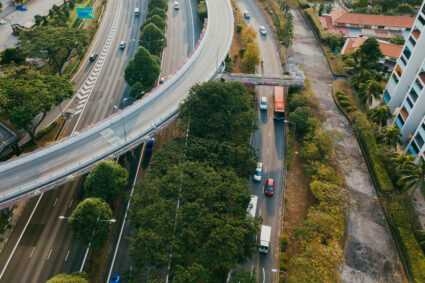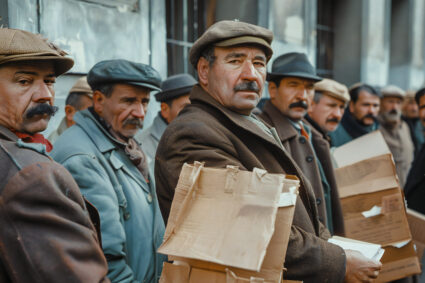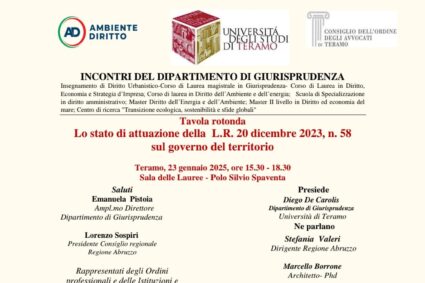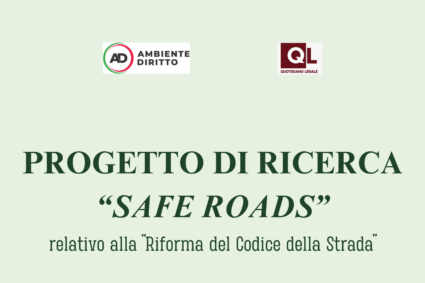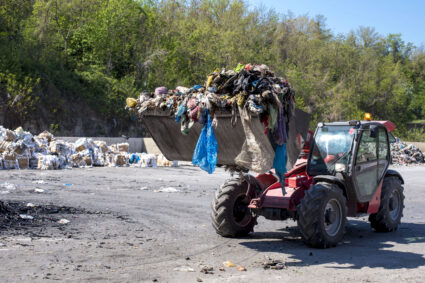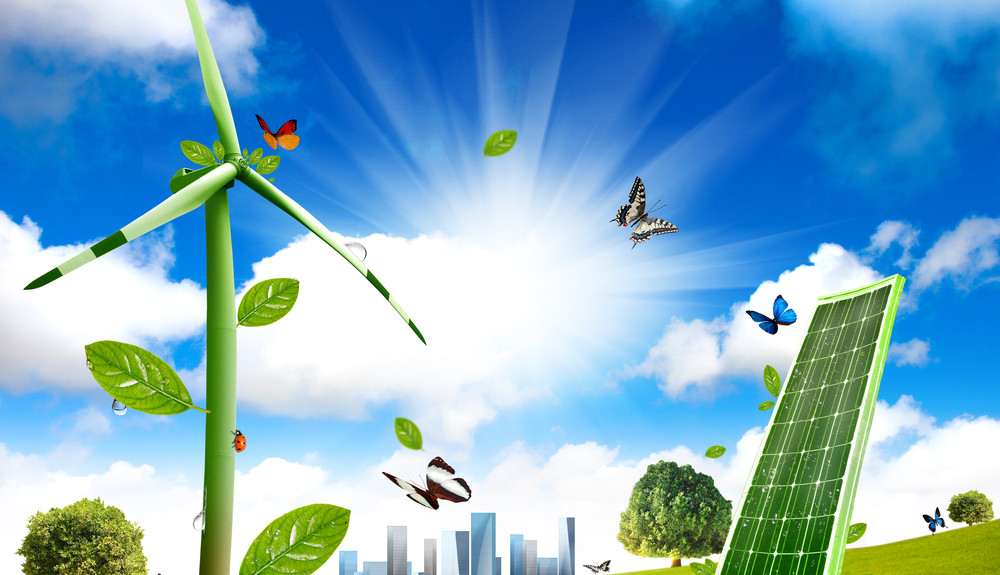
LIFE: 144 progetti di investimento innovativi per migliorare l’ambiente e l’azione per il clima.
La Commissione europea ha approvato un pacchetto di investimenti di 222,7 milioni di euro dal bilancio UE per sostenere il passaggio dell’Europa a un futuro più sostenibile e a basse emissioni di carbonio. Il finanziamento dell’Unione stimolerà ulteriori investimenti per un totale di 398,6 milioni di euro da destinare a 144 nuovi progetti in 23 Stati membri.
Il sostegno proviene dal programma LIFE per l’ambiente e l’azione per il clima. 323,5 milioni di euro saranno destinati a progetti riguardanti tre ambiti: ambiente e uso efficiente delle risorse, natura e biodiversità, governance e informazione in materia di ambiente.
Karmenu Vella, Commissario responsabile per l’Ambiente, gli affari marittimi e la pesca, ha dichiarato: “Sono lieto di vedere che anche quest’anno il nostro programma LIFE sosterrà tanti progetti innovativi per rispondere a sfide ambientali comuni. I progetti finanziati da LIFE, con finanziamenti relativamente esigui e idee semplici, creano attività d’impresa ecologiche e redditizie, che concorrono a realizzare il passaggio a un’economia circolare e a basse emissioni di carbonio.”
Miguel Arias Cañete, Commissario per l’Azione per il clima e l’energia, ha dichiarato: “Con l’entrata in vigore dell’accordo di Parigi è giunto il momento di mantenere le nostre promesse. Questi progetti creeranno le giuste condizioni per promuovere soluzioni innovative e per diffondere le migliori pratiche nell’ambito della riduzione delle emissioni e dell’adattamento ai cambiamenti climatici in tutta l’Unione europea, sostenendo così l’attuazione dell’accordo di Parigi da parte dell’UE.”*
I progetti dimostrano l’impegno continuo della Commissione per uno dei suoi fiori all’occhiello: il pacchetto a favore dell’economia circolare. È previsto un numero significativo di premi per aiutare gli Stati membri a realizzare efficacemente la transizione verso un’economia più circolare. Tra gli esempi di progetti premiati nel 2016 figurano i nuovi camion elettrici a idrogeno a risparmio energetico per la raccolta dei rifiuti in Belgio, nuove tecnologie per ridurre i rischi sanitari dei fanghi nelle acque reflue applicate per la prima volta in Italia e un progetto per aiutare i comuni greci, tra cui Olimpia, ad aumentare i tassi di riciclaggio.
Nel campo dell’azione per il clima, gli investimenti saranno destinati a sostenere l’adattamento ai cambiamenti climatici, la mitigazione dei cambiamenti climatici e i progetti di governance e informazione in materia di clima, per un totale di 75,1 milioni di euro. I progetti selezionati concorrono al conseguimento dell’obiettivo dell’UE di ridurre le emissioni di gas a effetto serra di almeno il 40% entro il 2030, contribuendo alla transizione verso un’economia a basse emissioni di carbonio e resiliente sotto il profilo climatico. Ad esempio, tra i progetti del 2015 figurano il ripristino e lo stoccaggio del carbonio nelle torbiere di cinque Stati membri (Estonia, Germania, Lettonia, Lituania e Polonia), la produzione dimostrativa di cemento e calcestruzzo a basse emissioni in Francia, il rafforzamento della resilienza ai cambiamenti climatici dei vigneti in Germania e l’attuazione di misure di adattamento nelle aree urbane di Cipro.
I 56 progetti della componente LIFE Ambiente e uso efficiente delle risorse mobiliteranno 142,2 milioni di euro, di cui 71,9 milioni forniti dall’UE, e riguardano azioni in cinque aree tematiche: aria, ambiente e salute, uso efficiente delle risorse, rifiuti e acqua. I 21 progetti in materia di uso efficiente delle risorse mobiliteranno da soli 43,0 milioni di euro, agevolando il passaggio a un’economia più circolare in Europa.
I 39 progetti LIFE della componente Natura e biodiversità sostengono l’attuazione delle direttive Habitat e Uccelli e la strategia dell’UE in materia di biodiversità fino al 2020. La dotazione di bilancio complessiva di questi progetti è di 158,1 milioni di euro, a cui l’UE ne contribuirà 95,6 milioni.
I 15 progetti LIFE della componente Governance e informazione in materia di ambiente accresceranno la consapevolezza circa le questioni ambientali. La dotazione di bilancio complessiva di questi progetti è di 23,2 milioni di euro, di cui 13,8 milioni provenienti dall’UE.
I 16 progetti LIFE della componente Adattamento ai cambiamenti climatici mobiliteranno 32,9 milioni di euro, di cui 19,4 milioni forniti dall’UE. Le sovvenzioni sono concesse a progetti relativi a cinque aree tematiche: agricoltura/silvicoltura/turismo, adattamento in zone insulari/montane, adattamento/pianificazione urbanistica, valutazione delle vulnerabilità/strategie di adattamento, acqua.
La dotazione complessiva dei 12 progetti LIFE della componente Mitigazione dei cambiamenti climatici è pari a 35,3 milioni di euro, di cui 18,0 milioni provenienti dall’UE. Le sovvenzioni sono concesse a progetti relativi alle migliori pratiche e a progetti pilota e dimostrativi in tre settori tematici: energia, industria e agricoltura/silvicoltura/uso del suolo.
I 6 progetti LIFE della componente Governance e informazione in materia di clima miglioreranno la governance e accresceranno la consapevolezza circa i cambiamenti climatici. La dotazione di bilancio complessiva di questi progetti è di 6,9 milioni di euro, di cui 4,1 milioni provenienti dall’UE.
I progetti vengono illustrati nell’allegato del presente comunicato stampa.
Contesto
Il programma LIFE è lo strumento finanziario dell’UE per l’ambiente e l’azione per il clima. Esiste dal 1992 e ha cofinanziato più di 4 300 progetti in tutta l’Unione e nei paesi terzi, mobilitando 8,8 miliardi di euro e contribuendo con 3,9 miliardi di euro alla protezione dell’ambiente e del clima. Il numero di progetti in corso si attesta costantemente sui 1 100. Il programma LIFE, la cui dotazione finanziaria per il periodo 2014–2020 è fissata a 3,4 miliardi di euro a prezzi correnti, comprende un sottoprogramma Ambiente e un sottoprogramma Azione per il clima.
Per ulteriori informazioni su LIFE
Link all’allegato
Per contattare le competenti autorità nazionali si veda qui.
DI SEGUITO I PROGETTI PER ITALIA (IT) (37 progetti – 81.6 millioni)
LIFE Nature & Biodiversity (4 projects – 8.2 million)
FLORANET LIFE (Ente Parco Nazionale della Majella):
The project aims to improve the conservation status of eight plant species in three of the main protected areas of the Apennines in Central Italy: the Majella National Park, the Abruzzo, Lazio and Molise National Park, and the Sirente Velino Regional Park. To this end, measures to protect the sites from grazing, mowing and tourism will be considered, along with the adoption of environmentally-friendly restoration techniques.
LIFE GRANATHA (D.R.E.AM. ITALIA Soc. Cooperativa Agricolo Forestale): The project aims to improve the conservation status of a number of protected bird species found in the Natura 2000 network site of Pratomagno, including the Dartford warbler (Sylvia undata), woodlark (Lullula arborea), red-backed shrike (Lanius collurio), Montagu’s harrier (Circus pygargus), tawny pipit (Anthus campestris), European nightjar (Caprimulgus aeuropeus), short-toed snake eagle (Circaetus gallicus), and the European honey buzzard (Pernis apivorus). The project also aims to reverse the negative trend affecting the conservation status of Pratomagno’s heathland habitats (caused by the abandonment of traditional activities), and to ensure their sustainable management in the long term.
RE.LIFE (Consorzio di gestione dell’Area Marina Protetta di Portofino):
The ribbed Mediterranean limpet (Patella ferruginea) has disappeared from certain coastal areas of Liguria. This is a result of pollution and being harvested for food and bait by recreational anglers. The aim of the RE.LIFE project is to reintroduce the species to the marine protected areas in Liguria through the transfer of limpets from other locations and the creation of hatcheries to breed further juveniles for transfer to the wild. The project will define a protocol for controlled reproduction and restocking of the species.
LifeTicinoBiosource (Parco Lombardo della Valle del Ticino – Department of Vegetation and Forests): Habitat loss and degradation is having an adverse impact on many species found in Ticino Park, Italy. This project has been set up to improve populations of 15 key species found in the park that are listed in the annexes of the Birds and Habitats directives. In particular, it will carry out conservation measures aimed at the Adriatic sturgeon (Acipenser naccarii) and the ferruginous duck (Aythya nyroca), as well as reintroducing the European sturgeon (Huso huso) to the Po basin. The project will also begin the process of having the lower part of the Ticino River designated as a Natura 2000 network site.
LIFE Environment & Resource Efficiency (19 projects – 48.2 million)
LIFE MONZA (Istituto Superiore per la Protezione e la Ricerca Ambientale): Working in a pilot district in the Italian city of Monza, the project will implement and evaluate a new methodology for noise management within a Low Emission Zone (LEZ). This methodology of noise pollution reduction should also contribute to the lowering of air pollutant emissions. Measures will include traffic calming, use of low-noise road surfaces and promotion of lifestyle changes, for example to encourage cycling. The project’s approach will be replicable and will contribute to the implementation of the EU Environmental Noise Directive.
LIFE AGROWETLANDS II (Alma Mater Studiorum – University of Bologna): Wetlands from which water is drawn for agricultural irrigation are vulnerable to degradation and salinisation, especially in arid and semi-arid regions. The project will test the use of sensors, sophisticated decision-making software and other management measures to reduce pressure on a pilot site in northern Italy, returning soil salinity to levels that are appropriate for wetland conservation.
LIFE-BIOREST (Consorzio Italbiotec): The project will demonstrate use of fungal and bacterial strains, in combination with organic by-products from agriculture and biogas production, to remediate soils at sites that have been used for service stations and by the petrochemical industry. The project will demonstrate the techniques on soils from a site in Fidenza, northern Italy. The project has the potential to contribute to the implementation of the EU Soil Thematic Strategy.
LIFE BITMAPS (LFoundry S.r.l.): High-tech manufacturing of electronics and semiconductors produces effluents that contain hazardous substances. The LIFE BITMAPS project will demonstrate new techniques to treat such wastewater at source and dramatically reduce the presence of tetramethylammonium hydroxide and other substances in effluent from specialist processes.
LIFE BIOPOL (CODYECO): The aim of the project is to demonstrate the technical performance and economic viability of an innovative process for producing new biopolymers for use in the tanning industry. These will be produced by recycling waste biomass from the related tanning process and agro-food industries. By doing so, the industry should decrease water consumption and the use of hazardous chemicals, such as heavy metals, formaldehyde, chromium, chlorinated paraffin, and VOCs (volatile organic compounds).
LIFE BrennerLEC (Autostrada del Brennero/Brennerautobahn AG): This project will demonstrate a Low Emission Corridor (LEC) for the A22 motorway, which links Modena with Austria via the Brenner Pass. The project will validate a set of measures to reduce air pollution, noise pollution, and greenhouse gas emissions. Dynamic speed, road capacity management, and integrated traffic management will be used to control speed limits on the basis of forecasts of pollutant concentrations and traffic flows. Data will derive from innovative meteorological and pollutant dispersion models.
LIFE B.R.A.V.E.R. (Università Commerciale ‘Luigi Bocconi’): The main objective of the project is to support the full integration of EMAS into EU environmental legislation, by reducing and simplifying the administrative costs and burdens of EMAS-registered companies. The project will evaluate new regulatory relief proposals for organisations registered with EMAS or other voluntary certification schemes, so that feasible and cost-effective measures are available for enhancing organisations’ environmental performance.
LIFE CHIMERA (TRE P ENGINEERING SRL): The main objective of the project is to build a pilot plant to demonstrate an innovative and sustainable on-farm treatment for poultry manure (avoiding transport costs). The new technology will convert manure into valuable fertilisers, while also producing thermal and electrical energy and tackling problems related to disposal, transport and gas emissions. By closing the nitrogen cycle inside the farm, the project will help implement the EU Circular Economy package’s ‘waste to energy’ and ‘waste to fertiliser’ initiatives.
LIFE MOTTLES (Consiglio Nazionale delle Ricerche): The aim of the project is to define scientifically-based thresholds and critical levels for the protection of forests from ozone (O3) pollution injury in a changing climate scenario. To achieve this, the project is developing an integrated monitoring system for the continuous measurement of parameters affecting European forest ecosystem sustainability. This will be demonstrated in three European countries. The project will help in the development of adaptive management strategies for sustainable forest management and stimulate the development of legislative standards for protecting forests against ozone.
LIFE M3P (Centro Tessile Cotoniero e Abbigliamento): The project aims to promote and develop industrial symbiosis by connecting SMEs in different sectors to foster alternative uses for their wastes. An online ‘Material Match-Making Platform’ (M3P) will promote knowledge about the industrial waste produced in an area, the life-cycles of products and the materials needed to make them. This platform will enable waste from one industry to become a secondary raw material for another industry. The project will also demonstrate the feasibility of a more efficient use of raw materials through the systematic application of eco-design techniques.
LIFE Paint-it (Università degli studi di Roma ‘Tor Vergata’): Fouling refers to the unwanted growth of biological material on the immersed surface of vessels. It can severely degrade their performance (energy, maintenance, manoeuvrability, etc). Currently, more than 5 000 tonnes/yr of copper leaches from ships’ anti-fouling paints worldwide. The main aim of LIFE Paint-it is to demonstrate a novel manufacturing process for producing innovative and safe antifouling paints for naval applications. This environmentally-friendly approach will eliminate harmful biocides and replace them with a physical antifouling mode of action that uses hybrid organic/inorganic resins.
VITISOM LIFE (Università degli Studi di Milano): The project aims to introduce an innovative organic fertilisation system to enhance vineyard soil protection. Its methodology will help reduce soil compaction, erosion and the loss of organic matter. The project will design and implement five prototypes for sustainable soil management, each adapted to a specific context, using different organic matrices (e.g. compost, manure, digestate). The results will be used to define a complete framework for vineyard organic matter management.
LIFE DOP (Consorzio Latterie Virgilio): The project aims to promote the transition to a circular economy along the whole value chain of the dairy sector. It will evaluate and demonstrate a new model, and apply it to the production of two cheeses with protected designation of origin (PDO status), Grana Padano and Parmigiano Reggiano. The project will integrate all phases along the production chains, to reuse all of the waste products generated. This will promote greater resource efficiency, and also reduce emissions of fine particulates, ammonia, nitrous oxide and carbon dioxide. The reuse of slurry as fertiliser will decrease ammonia emissions and increase soil organic content.
SOS4LIFE (Comune di Forlì): Soil sealing – the covering of the ground with an impermeable material – often affects fertile agricultural land. This can put biodiversity at risk, increase the impact of flooding and the risk of water scarcity and contribute to global warming. SOS4LIFE aims to implement a viable regulatory framework and planning tool for achieving a target of ‘no net land take’ at the level of municipalities, in line with the EU’s 2050 target set out in the Roadmap to a Resource Efficient Europe. The project aims to promote de-sealing interventions as a way of compensating for newly urbanised areas and improving urban resilience to climate change.
LIFE CRAL (FRENI BREMBO SpA): The objective of LIFE CRAL is to design and construct a pre-industrial-scale pilot line, which is able to produce high-quality, lightweight components from recycled low-purity (<95%) aluminium and the new eco-magnesium (ECO-Mg) alloy in a safe and clean manner. The pilot line will introduce sustainable, semisolid metal casting technology for the first time to the automotive sector.
LIFE MARINAPLAN PLUS (TREVI SpA): The project aims to tackle the problem of the build up of sediments in coastal ports by scaling up an innovative and environmentally-sustainable management technology at the Italian port of Cervia. Littoral materials that collect near the entrance of harbours hindering access can be avoided through the use of submerged ejectors to pipe such material to suitable areas where they do not represent an obstacle to navigation. The project aims to establish a demonstration plant that can be replicated at other similar-sized ports.
SOIL4WINE (Università Cattolica del Sacro Cuore): Vineyard landscapes in the northern Apennines are being adversely affected by erosion, the decline of organic matter, local and diffuse contamination, sealing, compaction, decline in biodiversity and landslides. The SOIL4WINE project aims to prevent these threats to soil quality in four protected areas of western Emilia-Romagna. It will introduce better soil management and a decision-making tool that will help farmers assess their particular situation and how to tackle threats to soil quality.
LIFE ECLAT (Ceramica Fondovalle S.p.A.): The project will implement a closed loop process in the manufacturing of ceramic slabs for use in tiles, kitchen tops and bathroom surfaces. This will be demonstrated at Ceramica Fondovalle in Maranello (Modena province). This circular economy concept will involve reuse of end-of-life ceramic slabs dismantled from existing installations. The manufacturer will produce slabs containing up to 40% recycled raw materials in a process improvement that lowers waste, water use, energy consumption and CO2 emissions, as well as requiring less packaging.
LIFE NEREIDE (The Department of Civil and Industrial Engineering (DICI) at the University of Pisa): The aim of this project is to produce porous, low-noise road surfaces that substitute recycled asphalt pavements and crumb rubber from scrap tyres for virgin aggregates and some virgin bitumen. Some 5.25 km of test road surfaces will be laid in Tuscany and Belgium, using at least 4 800 end-of-life tyres. The new surfaces are expected to reduce urban noise pollution by at least 5 decibels in comparison with traditional roads and 2 decibels compared to other porous asphalt surfaces.
LIFE Environmental Governance & Information (4 projects – 7.4 million)
LIFE-Food.Waste.StandUp (Federalimentare Servizi Srl): The project aims to tackle food waste by supporting existing Italian legislation on the topic and raising awareness of the need to act on surplus food management and food waste prevention among the three key actors of the food supply chain: agro-food companies, food retailers and consumers. This will be done by means of a coordinated information campaign, carried out at national and European level. The project expects to reach more than 12 000 food retailers and 20 000 agro-food companies and half a million consumers, leading to a 10% increase in recovery of food waste.
LIFE Net pro Net (LIPU):The project’s objective is to create a network of volunteers who will contribute to the active management of Natura 2000 sites while also disseminating knowledge and appreciation of the Natura 2000 network in local communities. The volunteers will be trained to monitor and reduce the threats or damage (accidental or otherwise) to protected bird species and their favoured habitats, and will be involved in upgrading the Italian Natura 2000 network database. The project expects to recruit at least 150 volunteers across 15 Natura 2000 network sites.
Clean Sea LIFE (Parco Nazionale dell’Asinara):The project’s aim is to support the application of the Marine Strategy Framework Directive (MSFD) and to increase awareness on marine litter, empowering citizens to become part of the solution. It will work towards removing existing marine litter and prevent further littering. In addition, the project will train fishing industry professionals in responsible practices and provide Italian authorities with guidelines for the management of marine litter. More than 20 000 stakeholders are expected to sign a code of conduct on prevention of marine litter.
LIFE ASAP (Istituto Superiore per la Protezione e la Ricerca Ambientale):The project seeks to limit the spread and impact of invasive alien species (IAS) in Italy through public awareness on the topic of IAS and more participation in the management of these species. It will circulate voluntary codes of conduct and guidelines on IAS to key stakeholder groups, including florists, landscape architects, pet shops, aquarists, anglers and hunters. The project will also train knowledge multipliers, such as zoos, botanical gardens and teachers, as well as public administrations to ensure that the new EU Regulation on IAS is implemented across Italy. It will publish a national IAS black list.
LIFE Climate Change Adaptation (3 projects – 5.2 million)
RainBo LIFE (Lepida SpA): The project aims to develop and implement a climate change adaptation strategy and action plan for the municipality of Bologna. In particular, this will focus on coping with the increased likelihood and effects of severe rainfall as a result of climate change. Using advanced systems for environmental monitoring and forecasting models, the project will identify specific vulnerabilities and engage with stakeholders to limit the consequences of sudden rainfall events and flash floods in the urban landscape.
LIFE MASTER ADAPT (Regione Autonoma della Sardegna Assessorato della Difesa dell’Ambiente): The project aims to identify and test innovative tools of multi-level governance, in order to help regions and local authorities define and develop climate change adaptationstrategies and policies. In particular, it plans to develop a common methodology that will enable regions with similar needs and capacities to identify their main vulnerabilities and priorities for action, in line with Italy’s national adaptation strategy.
LIFE AFORCLIMATE (Consiglio per la ricerca in agricoltura e l’analisi dell’economia agraria): The project’s goal is to maintain and improve the efficiency of the beech forest ecosystem in the Apennine mountains through effective forest management which takes climatic factors into account. It aims to create a detailed forecast model and develop a monitoring scheme that will assess the impact of climatic factors, in order to better promote forest regeneration and resilience, as well as seed production.
LIFE Climate Change Mitigation (5 projects – 10.8 million)
SheepToShip LIFE (Consiglio Nazionale delle Ricerche): The main objective of the project is to reduce the greenhouse gas emissions of the Sardinian sheep farming sector and dairy supply chain by 20% in 10 years. The project will identify optimal management and sustainability strategies for the sector, in order to reduce the environmental impact of all stages of the supply chain whilst maintaining quality and driving eco-innovation.
LIFE ECONOMICK (SE.TE.C. s.r.l.): The project aims to reduce greenhouse gas emissions in the ceramic industry. It will demonstrate an intermittent kiln for production of ceramic table ware and sanitary ware that reuses waste heat. The new technology is designed to significantly reduce greenhouse gas emissions and consumption of energy and raw materials without affecting product quality.
LIFE+FORAGE4CLIMATE (Centro Ricerche Produzioni Animali): The project will develop tools and good practices to help dairy farmers monitor greenhouse gas emissions related to land use, and preserve or increase the carbon stock in soil used to produce forage for ruminants. By engaging dairy farmers in pilot areas in Sardinia and Greece, the project seeks to promote farming methods that contribute to climate change mitigation, economic development and sustainable production, through a better understanding of the link between agriculture and climate change.
OLIVE4CLIMATE LIFE (Università degli Studi di Perugia): The project aims to use the olive tree’s ability to thrive in ecologically challenging conditions as an opportunity to demonstrate the sector’s contribution to carbon sequestration in soils. It will show how the olive oil industry has the potential to mitigate climate change, the effects of which are most apparent in regions where olive trees are most abundant. The project aims to monitor greenhouse gas emissions in the olive oil value chain, promote the development of secondary products and establish a labelling and quality assurance scheme.
LIFE-DIADEME (Reverberi Enetec – Gruppo MPES (Italy)): This project will demonstrate a cost-efficient new street lighting dimming system that is designed to reduce energy consumption by 30% in comparison with state-of-the-art control systems. The technology will be installed on a pilot basis in EUR, a residential and business district of Rome. The project will carry out a life-cycle assessment, life-cycle cost analysis and preliminary market and socio-economic analyses of the new system, which is expected to reduce street lighting maintenance costs by 10% and contribute to a 30% reduction in national expenditure on public lighting.
LIFE Climate Governance & Information (2 projects – 1.7 million)
LIFE SIDE (European University Institute): The project aims to contribute to the revision of the rules for the EU Emissions Trading System (ETS) by creating a knowledge hub and a point of reference for policy-makers involved in the design and implementation of the scheme. This will include an economic assessment of the first 10 years of the EU ETS, a forum for constructive policy dialogue, the creation of a network of some 20 experts and online resources to enhance coordination.
LIFE FRANCA (Università degli Studi di Trento):The project aims to raise awareness on flood risks in Italy and support spatial planning capacities to help anticipate such risks, in particular in Alpine areas. It will train staff of public bodies to anticipate risks and encourage the general public to adopt practices that can minimise the risks in a given territory. The project will also produce customised maps of flood risks for different user groups, set up a digital platform to disseminate information about flood risk maps and scenarios and draft guidelines for the communication and anticipation of flood risks.

